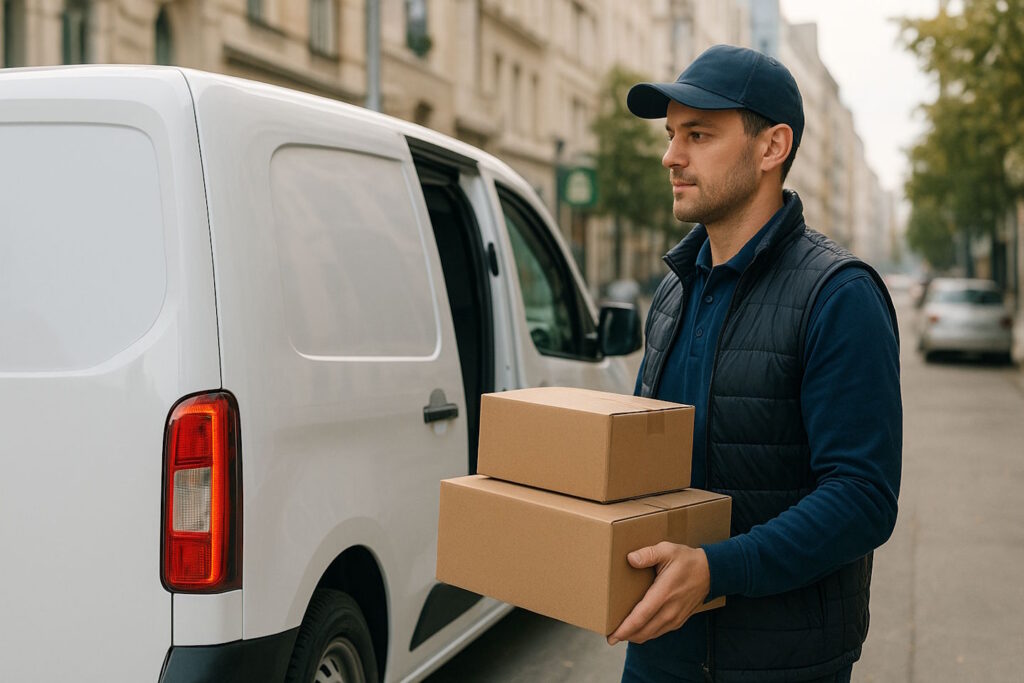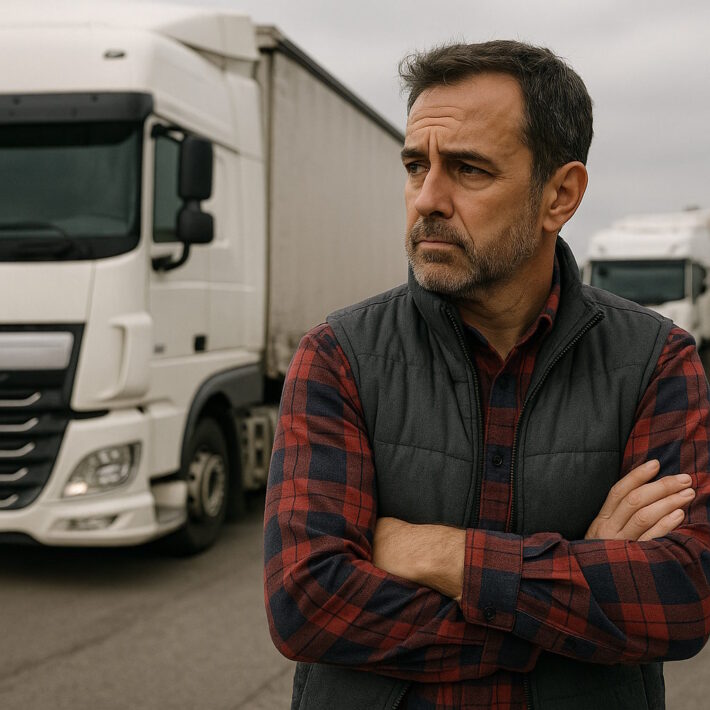Last-mile transport market: trends for 2025

Last mile transport is experiencing an unprecedented transformation. Between new environmental regulations, technological developments and changing customer expectations, sector players are navigating in a highly dynamic environment. Analysis of the trends shaping 2025.
A growing market despite economic challenges
Persistent sector dynamism
The transport and logistics market represents 10% of national GDP with a turnover of 200 billion euros (source). This growth is mainly fueled by the continued explosion of e-commerce, which maintains sustained demand for home deliveries.
“E-commerce is doing well” (source), confirm sector analysts, thus offsetting the economic uncertainties looming over 2025.
Inevitable consolidation
Paradoxically, this growth is accompanied by market consolidation. Business failures jumped by 37.8% in the January-September 2024 period (source), particularly affecting small structures with fewer than 10 employees. This trend should intensify in 2025, creating opportunities for the best-structured players.
The green revolution accelerates
Low emission zones: the new challenge
The expansion of low emission zones (LEZ) is radically transforming the urban logistics equation. Electric vehicles are gradually replacing traditional diesel models in urban fleets, considerably reducing CO2 emissions from the last mile.
Structuring of cycle-logistics
200 cycle-logistics companies now operate in 74 cities (source), benefiting from public authority support. The opening of the Gobelins logistics hotel in the first half of 2025 symbolizes this growth, accommodating both 44-ton trucks and cargo bikes.
This infrastructure dedicated to urban distribution perfectly illustrates the complementarity of decarbonized transport solutions.
Five major trends redefine the sector
1. Cost optimization through mutualization
50% of retailers place cost optimization at the top of their priorities (source). The development of logistics hubs and collaborative platforms allows companies to share costs and improve the efficiency of urban deliveries.
2. Hybridization of transport models
Companies are massively adopting hybrid models combining their own fleets with external carriers. This approach offers increased flexibility to adapt the most economical solution according to the specificities of each delivery.
3. Connected infrastructure and IoT
IoT sensors placed in vehicles, warehouses and handling equipment collect valuable data in real time. This connected infrastructure offers complete visibility on delivery status and enables precise prediction of future needs.
4. Rise of collaborative delivery
Beyond individuals with solutions like Shopopop or PickMe, professionals and craftsmen are adopting this model to optimize their costs while improving the flexibility of their deliveries.
5. Convergence of BtoC and BtoB standards
Delivery standards in B2B distribution are rapidly catching up with those of B2C, driven by the evolution of client company expectations.
AI at the heart of transformation
Predictive analysis and automatic optimization
Artificial intelligence now makes it possible to anticipate demand fluctuations and optimize distribution routes in real time. Automated warehouses equipped with intelligent robots are revolutionizing logistics activities.
Advanced tracking systems
Thanks to advanced tracking systems, companies can quickly identify delays or anomalies and minimize interruptions in the logistics flow. This reactivity becomes a decisive competitive advantage.
New operational imperatives
Environmental transparency
Environmental transparency is becoming a central pillar in the choice of logistics partners. In a market where sustainability constitutes a major competitive advantage, this transparency represents a strategic necessity.
Ever shorter deadlines
The explosion of online commerce forces companies to respond to increased demand for ever shorter delivery times. E-commerce giants have established new standards, forcing SMEs to rethink their strategy.
Persistent workforce shortage
The shortage of truck drivers continues to fuel cost pressure in 2025. This structural issue is pushing companies towards automation and optimization of their processes.
How Everest supports these changes
Faced with these transformations, companies need powerful tools to adapt quickly. Our TMS platform precisely addresses these challenges:
Intelligent optimization: Our route optimization algorithms enable up to 30% reduction in operational costs while respecting environmental constraints.
Real-time visibility: GPS tracking and automatic alerts provide the transparency required by customers while enabling optimal reactivity to unexpected events.
White label: Our white label solution allows companies to offer a premium customer experience while controlling their brand image.
Native interconnection: APIs and automation modules facilitate integration with the existing digital ecosystem.
Prospects for sector players
Opportunities to seize
- Accelerated digitalization: Companies investing in digitalization gain a head start
- Strategic partnerships: Mutualization becomes a major competitiveness lever
- Green innovation: Decarbonized solutions open new markets
Challenges to overcome
- Technological investments: Digital transformation requires substantial investments
- Team training: Tool evolution requires skills development
- Evolving regulations: LEZ and new environmental standards redefine the rules of the game
Key takeaways
2025 marks a turning point for last mile transport. Between mandatory decarbonization, cost optimization through AI and new customer expectations, companies that can adapt quickly will gain a decisive advantage.
Success will rest on three pillars: process digitalization, intelligent resource optimization and innovation capacity in the face of environmental challenges.
In this changing context, choosing the right technological tools is no longer an option but a strategic necessity to remain competitive.


